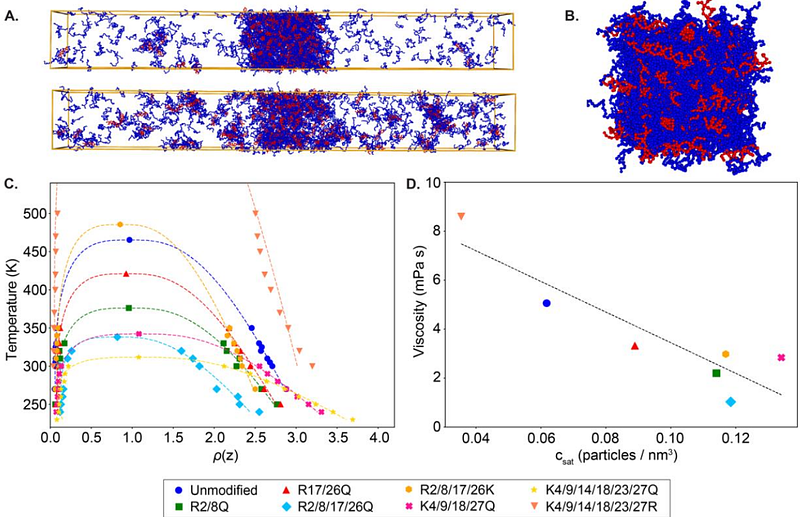Histone H3 tail charge patterns govern nucleosome condensate formation and dynamics

Histone H3 tail charge patterns govern nucleosome condensate formation and dynamics
Hammonds, E. F.; Singh, A.; Suresh, K. K.; Yang, S.; Meidl Zahorodny, S. S.; Gupta, R.; Potoyan, D. A.; Banerjee, P. R.; Morrison, E. A.
AbstractEmerging models of nuclear organization suggest that chromatin forms functionally distinct microenvironments through phase separation. As chromatin architecture is organized at the level of the nucleosome and regulated by histone post-translational modifications, we investigated how these known regulatory mechanisms influence nucleosome phase behavior. By systematically altering charge distribution within the H3 tail, we found that specific regions modulate the phase boundary and tune nucleosome condensate viscosity, as revealed by microscopy-based assays, microrheology, and simulations. Nuclear magnetic resonance relaxation experiments showed that H3 tails remain dynamically mobile within condensates, and their mobility correlates with condensate viscosity. These results demonstrate that the number, identity, and spatial arrangement of basic residues in the H3 tail critically regulate nucleosome phase separation. Our findings support a model in which nucleosomes, through their intrinsic properties and modifications, actively shape the local chromatin microenvironment--providing new insight into the histone language in chromatin condensates.